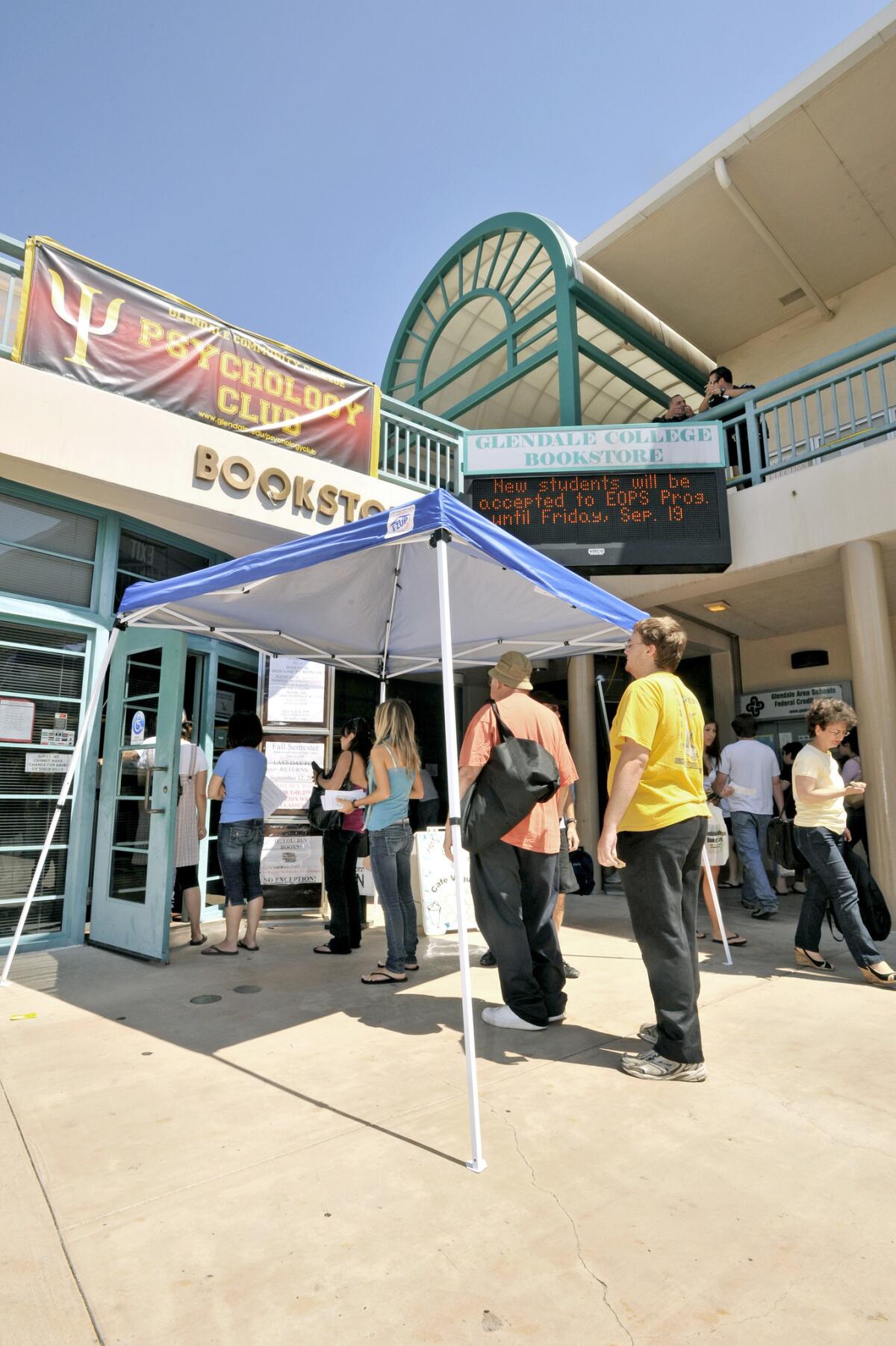Enrollment still a concern for Glendale Community College

- Share via
Glendale Community College officials predict they will receive $2.3 million more in revenue for 2014-15 than they did the previous year, but a remaining concern centers on student enrollment.
The upcoming fiscal year starting this July marks the second consecutive year that state will not cut funding for community colleges, said Ron Nakasone, executive vice president of administrative services.
“I think that we’re in a little better situation than last year. I know the board is still concerned about anticipating growth,” he said, adding later: “Growth is still a risk.”
During a budget study session Monday evening, he said the college’s aim is to see an enrollment growth of about 600 full-time equivalent students in 2014-15 — a figure made up of a combination of full-time and part-time students.
Those 600 students equate to $1 million in revenue.
“It’s important that we make at least that level of growth, otherwise we will have a deficit this year in revenue,” Nakasone said.
College officials have kept a watchful eye on enrollment all year, saying in late May they predicted a 1.2% enrollment dip for 2013-14. To make up for it, the college plans to offer more than 300 classes this summer, beginning on June 23.
Concerned over how it will pan out, officials have cited the recovering economy as partly to blame for students opting to work instead of enrolling in school.
“The problem we face statewide is a decline. There just aren’t a lot more people out there looking for an education,” said Michael Scott, president of the college’s academic senate. “The problem with prosperity is we suffer. When there [are] bad times, we are rolling in it. And we’re kind of in the middle right now. Which way it goes, we don’t know.”
In the meantime, Mary Mirch, vice president of instructional services, said officials have become much more aggressive in keeping an eye on classes that don’t fill to capacity or have very low full rates, she said.
This past spring, classes filled at an overall rate that came in at between 92% and 94%, she said.
“We have to watch it because the fill rates are where the students go,” Mirch said.
The college may also receive about $800,000 in student equity funding to close the achievement gap among various student sub-groups, but college officials still need to plan how to spend those funds.
Their task will be to analyze the ethnic and gender groups on campus and create a campus-tailored master plan to improve students’ success, said Ricardo Perez, the college’s vice president of student services.
--
Follow Kelly Corrigan on Twitter: @kellymcorrigan.
ALSO:
Sunland woman missing since June 5